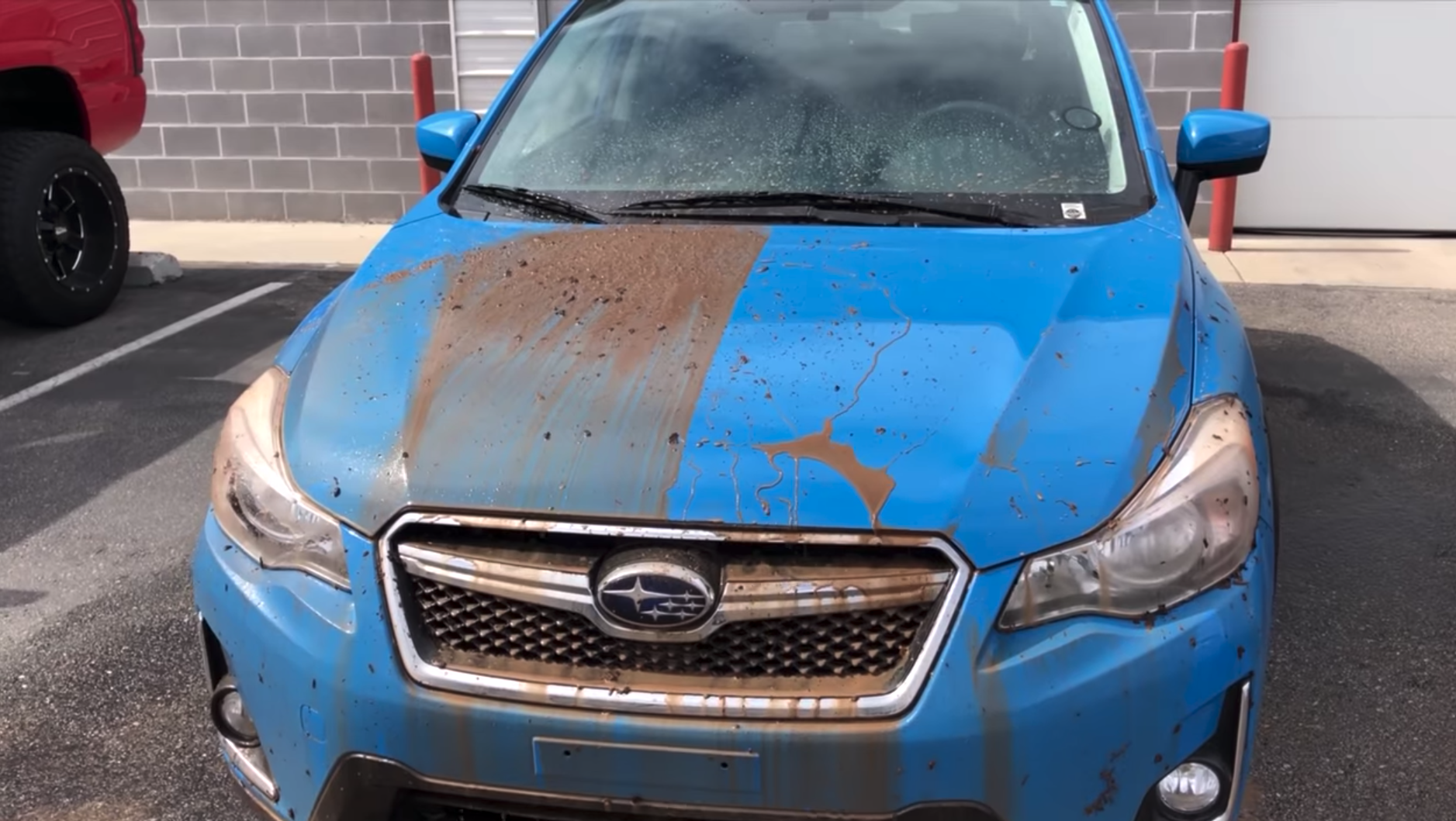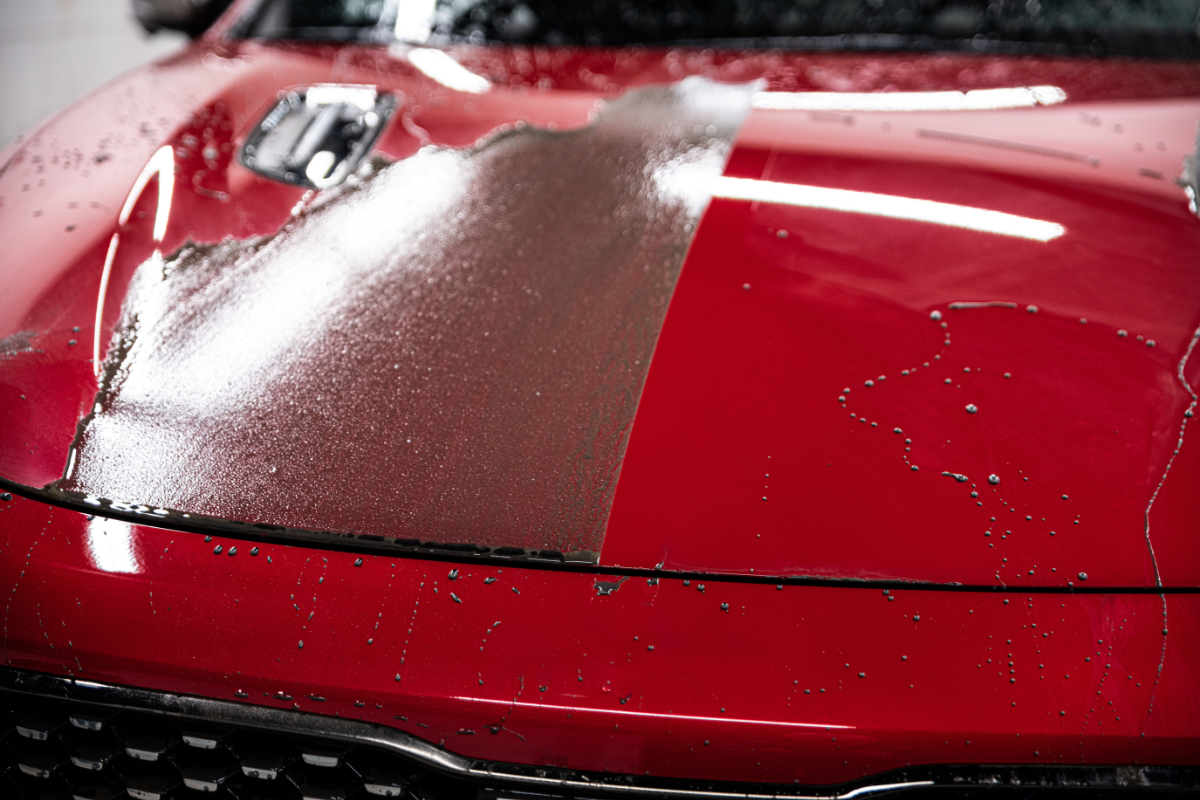The Duty of Ceramic Finish in Shielding Your Vehicle's Paint From Environmental Damages
Ceramic layer has become an innovative option for auto proprietors seeking to maintain the integrity of their automobile's exterior. By establishing a durable chemical bond with the paint, this sophisticated modern technology uses an awesome obstacle against different environmental threats, such as UV rays, acid rainfall, and impurities. However, comprehending the comprehensive benefits and the complexities of the application process is essential for maximizing its effectiveness. As we explore the nuances of ceramic coating, it ends up being noticeable that the selection to execute this protective action can dramatically affect your car's long life and aesthetic.
What Is Ceramic Finishing?
Ceramic covering is a sophisticated liquid polymer put on the outside surface areas of a vehicle, developed to offer a durable layer of protection for the paint. This innovative service forms a chemical bond with the automobile's manufacturing facility paint, developing a resilient and hydrophobic shield. The layer contains nanoparticles that complete the tiny blemishes in the paint, causing a smooth surface that improves radiate and gloss.
Typically, ceramic coatings are readily available in various formulations, enabling various degrees of security and durability. While some products can last for numerous months, others provide defense for a number of years, relying on the thickness of the application and environmental variables. The application process requires thorough prep work, including cleaning, sanitizing, and brightening the lorry's surface area to make sure optimum adhesion of the layer.

Benefits of Ceramic Layer
One of the main advantages of applying a ceramic finishing is the exceptional security it supplies to vehicle paint. This innovative finish creates a resilient layer that guards the car's surface from a variety of environmental dangers, consisting of UV rays, acid rain, bird droppings, and tree sap. By providing this robust defense, ceramic finishes considerably lower the risk of fading and etching, maintaining the automobile's visual appeal gradually.
Along with defense, ceramic layers are renowned for their hydrophobic properties, which fend off water and dust, making it less complicated to keep a tidy car. This self-cleaning effect reduces the frequency of washing, conserving both time and sources. Moreover, ceramic coverings improve the depth of the paint's gloss, leading to a polished and dynamic look that raises the general look of the lorry.
One more notable advantage is the long life of ceramic finishings. Unlike typical waxes or sealers that call for regular reapplication, ceramic finishes can last several years, providing an affordable option for car owners seeking long-lasting defense. Generally, purchasing ceramic layer causes enhanced toughness, lowered maintenance, and sustained aesthetic appeal for automotive paint.
How Ceramic Coating Works
A ceramic covering useful link operates with a chemical bonding procedure that develops a protective layer on the automobile's paint surface area. This ingenious solution uses sophisticated nanotechnology, where tiny particles of silica are put on hold in a fluid type - ceramic coating. Upon application, these bits bond with the manufacturing facility paint, developing a durable and hydrophobic layer that improves the vehicle's surface area
The primary component of ceramic layers, silicon dioxide (SiO2), adds to the covering's stamina and resilience. When healed, the finish changes right into a hard, glass-like coating that shields the paint from ecological impurities such as dust, UV rays, bird droppings, and tree sap. This molecular bond results in a surface that is not only resistant to scratches yet also easier to clean up, as dirt and gunk are less most likely to stick.
Furthermore, the hydrophobic residential or commercial properties of ceramic layers cause water to bead and slide off, lowering the opportunities of water spots and natural resource. This protective obstacle efficiently prolongs the life of the paint and preserves the car's visual charm, offering vehicle owners a lasting option for paint defense.
Application Refine of Ceramic Layer
When considering the application of ceramic layer, preparation is crucial to achieving optimum outcomes. Any kind of scrapes or imperfections should be addressed at this stage, as the finishing will certainly bond with the surface get more below.

Ceramic covering is then applied in little areas, typically utilizing an applicator pad. The car must be left to treat in a regulated atmosphere to enable the finishing to completely bond with the paint.
Long-Term Maintenance and Treatment
Achieving an effective ceramic coating application establishes the foundation for long-lasting protection, yet proper maintenance is essential to maintaining its advantages. Routine cleaning is vital; making use of a pH-neutral automobile shampoo will assist keep the layer's honesty without causing damages. Prevent automated cars and truck cleans that usage rough materials, as they can jeopardize the finishing's surface area.

Moreover, applying a ceramic finish maintenance spray can enhance the existing layer, offering an added boost in security and luster. It's suggested to perform this every three to six months, relying on environmental direct exposure.
Last but not least, car park in shaded areas or utilizing cars and truck covers can protect against prolonged exposure to damaging UV rays and environmental pollutants, better expanding the life of your ceramic layer. By adhering to these maintenance techniques, you can guarantee your lorry's surface stays protected and visually appealing for years ahead.
Verdict
In recap, reference ceramic layer offers as an essential safety action for vehicle paint, properly shielding vehicles from a variety of ecological hazards. Its capacity to produce a robust hydrophobic barrier not just improves aesthetic allure yet additionally dramatically minimizes the frequency and strength of maintenance required. The lasting nature of this advanced polymer emphasizes its worth in preserving vehicle integrity and look, ultimately contributing to a more aesthetically enticing and durable vehicle coating.
Ceramic covering is an innovative fluid polymer used to the outside surfaces of an automobile, made to give a sturdy layer of security for the paint. Ceramic coatings improve the deepness of the paint's gloss, resulting in a vivid and refined appearance that boosts the overall appearance of the automobile.
A ceramic finishing runs with a chemical bonding procedure that develops a protective layer on the automobile's paint surface.The primary part of ceramic layers, silicon dioxide (SiO2), adds to the covering's strength and durability.In recap, ceramic layer serves as an essential protective procedure for automotive paint, efficiently securing vehicles from a range of ecological threats.